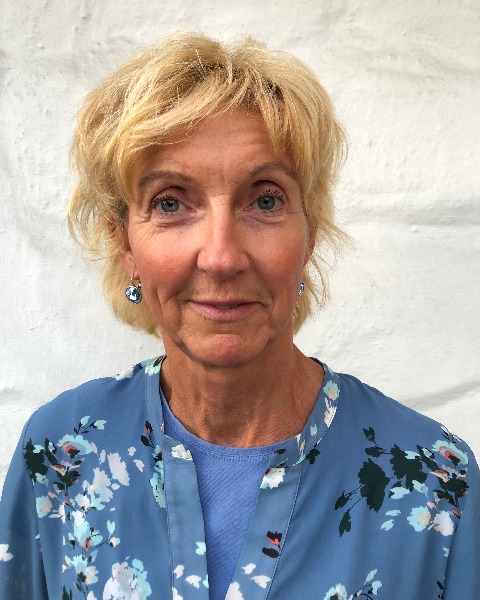MRD Assessment and role in Myeloma
Poster Session 1
P-082: Will survival improve by treating multiple myeloma patients at MRD relapse? The REMNANT study
Wednesday, September 27, 2023
1:30 PM - 2:30 PM EEST

Anne-Marie Rasmussen, PhD
Project Manager
Oslo University Hospital
OSLO, Oslo, Norway
Introduction: Although many new treatment options have become available, multiple myeloma (MM) is still considered an incurable disease. More recently, the role of achieving minimal residual disease (MRD) negativity has become more clearly defined in patients with MM. Multiple studies show that bone marrow based MRD assessment is one of the strongest prognostic factors, and deeper responses correlate with more favorable outcomes.
The REMNANT study will evaluate if treating at MRD relapse after 1st line (1.L) therapy prolongs PFS and OS compared to starting treatment at biochemical relapse/progressive disease (PD) in MM patients
Methods: The REMNANT study (RElapse from Mrd Negativity As iNdication for Treatment) is an academic, multicenter, open-label, randomized phase II/III study of newly diagnosed (ND) MM patients eligible for autologous stem cell transplant (ASCT). The study has a population-based approach and few exclusion criteria apply, including patients with kidney failure, amyloidosis and other comorbidities. 391 NDMM patients (age 18-75 years) eligible for ASCT will be enrolled in the study and receive 1.L treatment according to Norwegian national guidelines; 4 pre-transplant induction and 4 post-transplant consolidation cycles of bortezomib, lenalidomide and dexamethasone (VRd). After induction patients will undergo tandem or single transplant, depending on toxicity and response to first transplant. Following 1.L treatment 176 patients who are >CR and MRD negative (NGF Euroflow) will be enrolled in part 2 of the study and will be randomized in a 1:1 ratio to receive second line treatment (2.L) at MRD relapse in arm A or at PD in arm B. At loss of MRD negativity (arm A) or at PD in arm B, second line treatment will be daratumumab, carfilzomib, and dexamethasone and patients will be followed for PFS and OS. In part 2 we will compare different methods for measuring MRD; NGF, NGS, mass spectrometry and PET-CT. We want to evaluate how the different methods compare when it comes to sensitivity and outcome (PFS and OS)
Results: As of May 1st 2023, 276 patients have been enrolled in part 1. 128 patients had reached the post-consolidation step and have been evaluated for MRD status and 66 (52%) were >CR and MRD negative and have been enrolled in part 2 of the study. ORR was 97%. Fifty-two of 276 (17.6%) patients have discontinued treatment during 1.L; 22 due to PD, 11 patients have withdrawn from the study, 6 have died and 5 discontinued due to adverse event. Fifty-two of 276 (17.6%) patients have discontinued treatment during 1.L; 22 due to PD, 11 patients have withdrawn from the study, 6 have died and 5 discontinued due to adverse event. Among patients with PD during 1.L treatment 59% had high-risk cytogenetics (with gain1q and/or del17p and/or t(4;14)). A total of 8 patients have started 2nd line treatment in part 2 due to loss of MRD or PD.
Conclusions: Data so far show a very good response rate of 97%. The MRD negativity rate among patients who have finished 1.L treatment was 52%.
The REMNANT study will evaluate if treating at MRD relapse after 1st line (1.L) therapy prolongs PFS and OS compared to starting treatment at biochemical relapse/progressive disease (PD) in MM patients
Methods: The REMNANT study (RElapse from Mrd Negativity As iNdication for Treatment) is an academic, multicenter, open-label, randomized phase II/III study of newly diagnosed (ND) MM patients eligible for autologous stem cell transplant (ASCT). The study has a population-based approach and few exclusion criteria apply, including patients with kidney failure, amyloidosis and other comorbidities. 391 NDMM patients (age 18-75 years) eligible for ASCT will be enrolled in the study and receive 1.L treatment according to Norwegian national guidelines; 4 pre-transplant induction and 4 post-transplant consolidation cycles of bortezomib, lenalidomide and dexamethasone (VRd). After induction patients will undergo tandem or single transplant, depending on toxicity and response to first transplant. Following 1.L treatment 176 patients who are >CR and MRD negative (NGF Euroflow) will be enrolled in part 2 of the study and will be randomized in a 1:1 ratio to receive second line treatment (2.L) at MRD relapse in arm A or at PD in arm B. At loss of MRD negativity (arm A) or at PD in arm B, second line treatment will be daratumumab, carfilzomib, and dexamethasone and patients will be followed for PFS and OS. In part 2 we will compare different methods for measuring MRD; NGF, NGS, mass spectrometry and PET-CT. We want to evaluate how the different methods compare when it comes to sensitivity and outcome (PFS and OS)
Results: As of May 1st 2023, 276 patients have been enrolled in part 1. 128 patients had reached the post-consolidation step and have been evaluated for MRD status and 66 (52%) were >CR and MRD negative and have been enrolled in part 2 of the study. ORR was 97%. Fifty-two of 276 (17.6%) patients have discontinued treatment during 1.L; 22 due to PD, 11 patients have withdrawn from the study, 6 have died and 5 discontinued due to adverse event. Fifty-two of 276 (17.6%) patients have discontinued treatment during 1.L; 22 due to PD, 11 patients have withdrawn from the study, 6 have died and 5 discontinued due to adverse event. Among patients with PD during 1.L treatment 59% had high-risk cytogenetics (with gain1q and/or del17p and/or t(4;14)). A total of 8 patients have started 2nd line treatment in part 2 due to loss of MRD or PD.
Conclusions: Data so far show a very good response rate of 97%. The MRD negativity rate among patients who have finished 1.L treatment was 52%.
